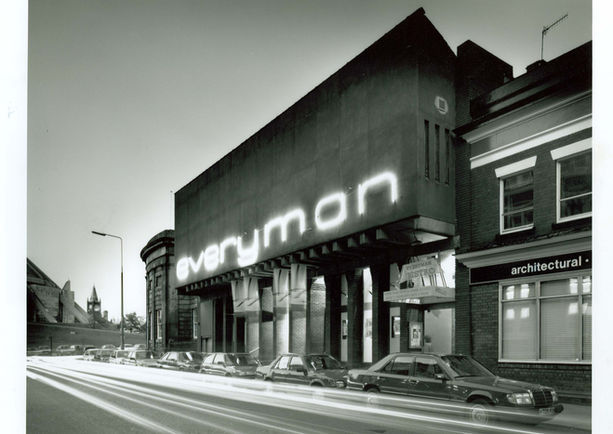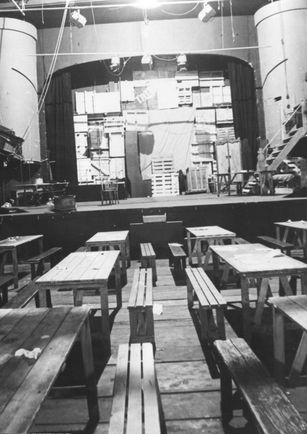
The Building
An hour before the theatre’s opening production of Henry IV Part I, actors John McEnery (playing Henry Hotspur) and Peter James (wearing the company’s only frilly shirt) were still securing seats to the auditorium floor. Above them, Susan Fleetwood was varnishing the upper level. The dressing rooms were in the toilets under the stage and in the first years, the central heating often didn’t work, or was a luxury they couldn’t afford.
Originally built in 1837 as Hope Hall, a dissenters’ chapel, the building later became a concert hall and a cinema. A plaque was unveiled earlier this year at the front of the current building to mark 164 years since prominent African American social reformer, abolitionist, and statesman Frederick Douglass spoke at Hope Hall in 1860. The plaque, designed by Liverpool born artist Vicki Opomu, features an image of Douglass and the quote ‘Liberty is meaningless where the right to utter one’s thoughts and opinions has ceased to exist’, and acts as a physical reminder of the struggle for freedom and reform and an inspiration for generations to come.
In 1964, the building was an R&B club owned by Leslie Blond and club nights often overlapped with rehearsals meaning actors were battling against the thumping beat of the bands. Despite the building’s shortcomings, the company struggled on until 1969, when the General Manager, John Gardner, fed up with balancing empty paint cans on the rafters to catch the rain, realised their long-term survival depended on a new theatre. For a while, they looked for a new building and then decided to rebuild on site. They purchased the lease from Blond and started to fund raise, spending 8 months, 3 nights a week hosting cocktail parties at the Adelphi Hotel and persuading people to sign a covenant of £50 a year. While some money did come from the Arts Council, it was people in the city who raised over £100,000 – the most successful public fund-raising campaign aside from the two cathedrals.
The old theatre closed with Hooley’s Hope Street Wake (1976), featuring an international Mouse Race, live pigs and hens and straw on the floor and a cast including Bill Nighy and George Costigan. During the closure, the company toured pubs and clubs as Vanload until the new Everyman re-opened with The Beggars Opera (1977). In 2011, another ‘final’ Everyman production took place. Macbeth with David Morrissey was the last show to be performed before work began on a £27m redevelopment of the theatre (compared to the £330,000 spent in the 1970s).
The renovation included new facilities like an education studio and a redeveloped portrait wall facade with 105 aluminium panels featuring images of Liverpool residents. Backstage facilities, including the dressing rooms, were improved. Recycled materials were used throughout where possible, with sustainability shaping choices. The auditorium was rebuilt in its original position using 25,000 bricks reclaimed from the old theatre, a tank on the roof collects rainwater to flush the toilets and the roof is also home to beehives and nesting boxes for bats and swifts. The Everyman re-opened in March 2014 with another Shakespeare production, this time Twelfth Night with Matthew Kelly and Nicholas Woodeson. The new building went on to win the RIBA Stirling Prize in 2014.








%20(002).png)
